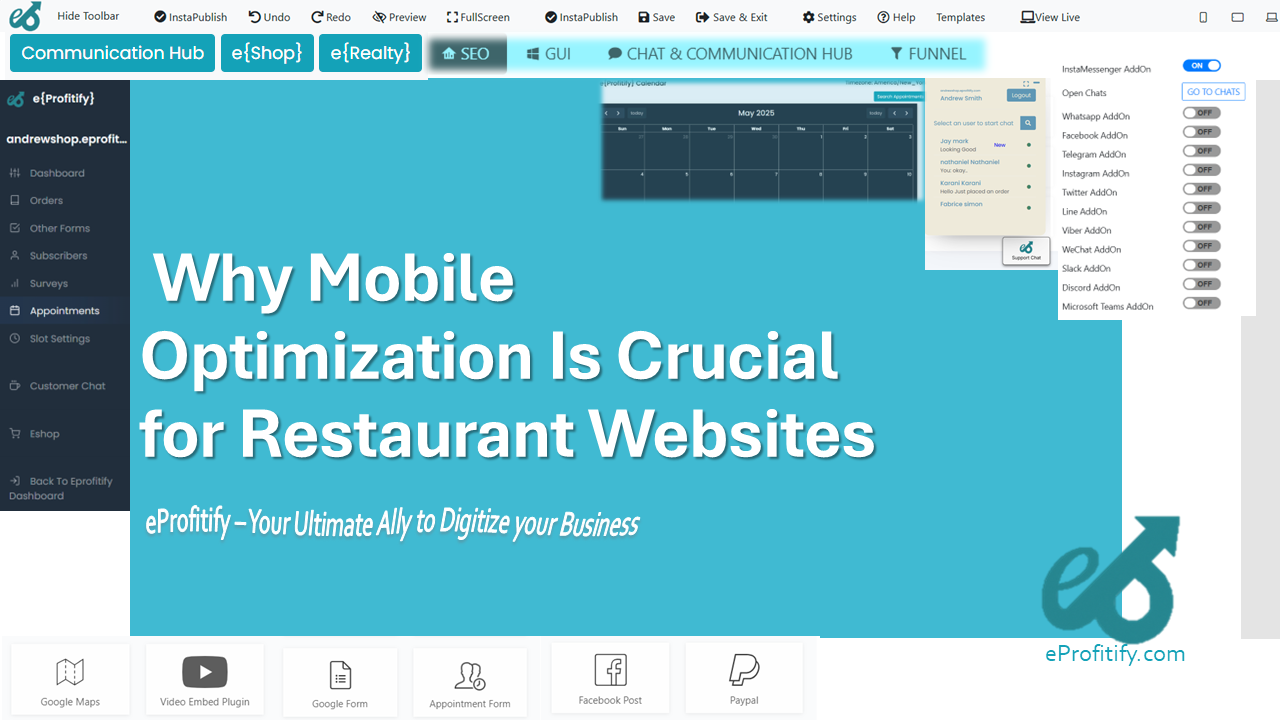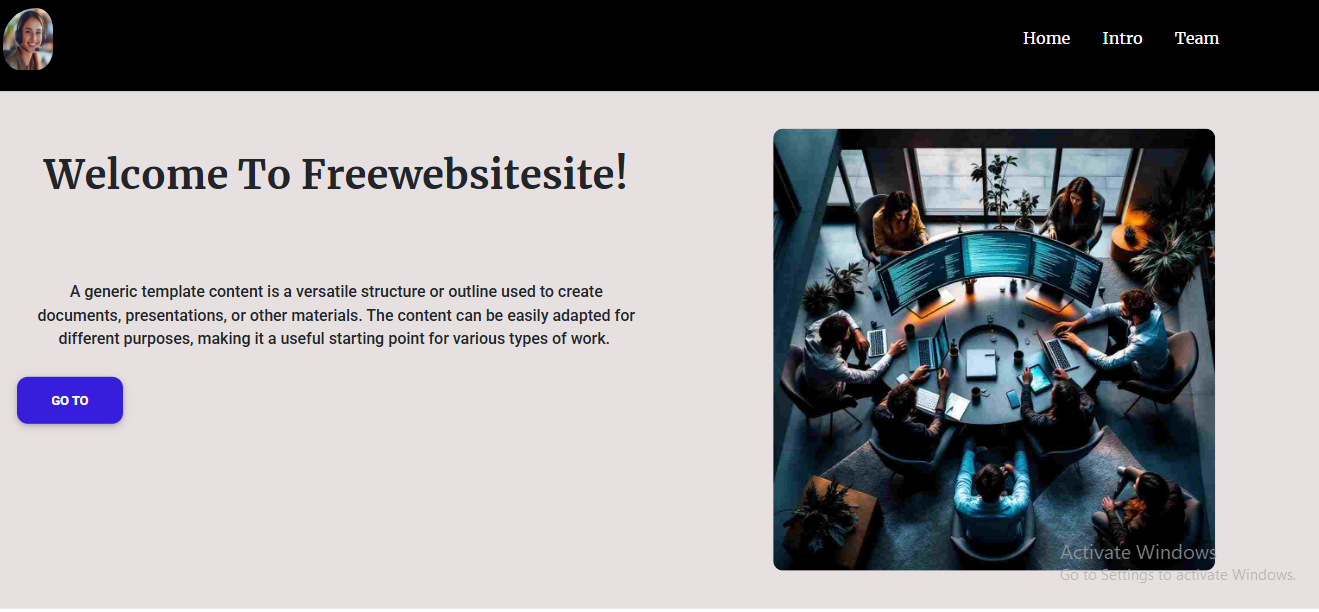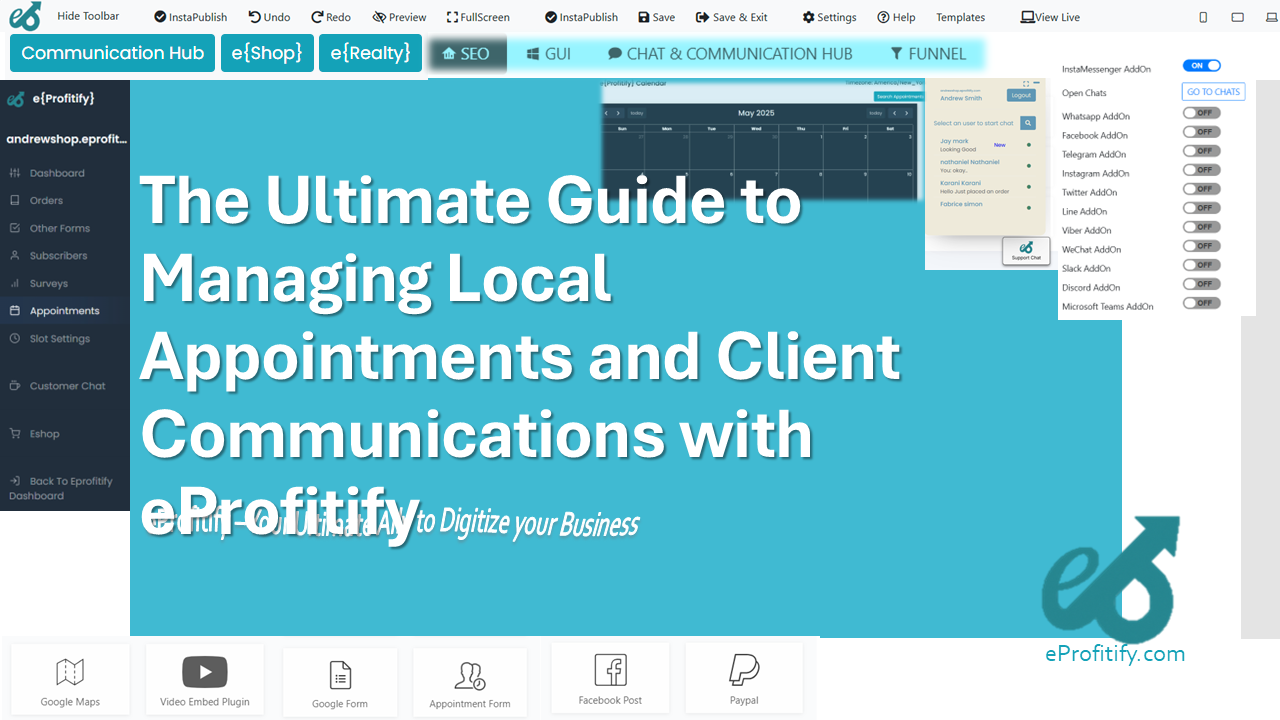Why Mobile Optimization Is Crucial for Restaurant Websites

Why Mobile Optimization Is Crucial for Restaurant Websites
In today’s digital-first world, a restaurant’s online presence is as vital as the quality of its food. With consumers increasingly relying on smartphones for everything from searching for menus to placing orders, mobile optimization is no longer optional—it’s essential. This article explores why mobile-friendly websites are critical for restaurants, backed by statistics, and highlights how eProfitify, a leading website management platform, empowers businesses to excel in the mobile era.
1. The Surge in Mobile Usage for Restaurant Searches
Over 60% of global website traffic now comes from mobile devices, according to Statcounter (2023). For restaurants, this trend is even more pronounced. Google reports that 63% of searches for restaurants occur on mobile devices, with diners often looking up menus, hours, or directions while on the go. Additionally, “near me” searches—think phrases like “best pizza near me”—have skyrocketed by over 250% in the past five years, per Google Trends. Failing to optimize for mobile means missing out on these high-intent customers.
Key Statistic: 88% of consumers who search for a local business on their phone visit or call within 24 hours (BrightLocal).
2. User Experience: Speed and Accessibility Matter
A slow or poorly designed mobile site frustrates users. Google found that 53% of mobile visitors abandon a page if it takes longer than three seconds to load. For restaurants, where impulse decisions drive traffic, a lagging site can cost reservations or orders. Mobile optimization ensures:
- Responsive design: Menus and buttons adapt to any screen size.
- Fast load times: Optimized images and streamlined code prevent delays.
- Easy navigation: Users quickly find critical info like address, hours, or click-to-call buttons.
A study by Akamai revealed that a mere one-second delay reduces conversions by 7%, underscoring the financial impact of speed.
3. Online Ordering and Reservations: Capturing Mobile-First Customers
The convenience of mobile ordering has reshaped the industry. According to the National Restaurant Association, 60% of consumers order delivery or takeout at least weekly, with mobile apps and websites driving 40% of total restaurant sales (Toast, 2023). Meanwhile, platforms like OpenTable note that 35% of diners book reservations via mobile devices.
Restaurants without mobile-optimized ordering interfaces risk losing revenue to competitors. Features like one-click checkout, saved payment methods, and real-time order tracking are now baseline expectations.
Statistic: Mobile food ordering is projected to grow at a 12% CAGR through 2030 (Market Research Future).
4. Local SEO and “Near Me” Searches
Google prioritizes mobile-friendly sites in local search results, especially after shifting to mobile-first indexing in 2020. Restaurants appearing in “near me” searches gain a disproportionate advantage. Tools like Google Business Profile (GBP) integration are critical, but they require a cohesive mobile experience to convert clicks into foot traffic.
A mobile-optimized site ensures:
- Accurate location tagging.
- Seamless integration with GBP for reviews and directions.
- AMP (Accelerated Mobile Pages) for faster loading.
Statistic: 76% of “near me” searches result in a visit within a day (Think with Google).
5. Social Media and Mobile Traffic
Social platforms like Instagram and TikTok drive discovery, with 45% of diners admitting to trying a restaurant after seeing it on social media (UPServe). However, if a link from a social post leads to a non-mobile-friendly site, the user experience fractures. Restaurants must ensure their mobile site retains visitors with responsive galleries, embedded menus, and instant chatbots to answer questions.
6. Essential Features of a Mobile-Optimized Restaurant Website
To compete, restaurant sites need:
- Responsive design: Automatically adjusts to device screens.
- Click-to-call and directions: One-tap access for inquiries or navigation.
- Mobile menus: PDFs replaced with HTML/CSS for faster loading.
- Integrated payment systems: For seamless online orders.
- Chatbots: Instant answers to FAQs or reservation requests.
eProfitify: Empowering Restaurants with Tailored Mobile Solutions
This is where eProfitify shines. As a leading website publishing and management platform, eProfitify equips restaurants with tools to dominate the mobile landscape:
- Instant Messaging & Chatbots: Engage visitors in real-time, answer queries, and reduce bounce rates.
- Appointment Management: Simplify reservations with a mobile-friendly booking system synced with calendars.
- Ecommerce Integration: Enable online ordering with customizable menus and secure payment gateways.
- CRM Tools: Track customer preferences, send personalized offers, and boost retention.
- SEO and Analytics: Optimize for local search and monitor traffic trends.
By consolidating these features into one platform, eProfitify removes technical barriers, allowing restaurants to focus on hospitality. For example, its AMP-enabled templates ensure fast load times, while its CRM identifies top customers for targeted promotions.
Case Study: A New York pizzeria using eProfitify saw a 30% increase in mobile orders and a 20% rise in repeat customers within three months.
Conclusion
Mobile optimization is non-negotiable for restaurants aiming to thrive. From capturing “near me” searches to facilitating frictionless orders, a mobile-first strategy drives visibility, revenue, and loyalty. Platforms like eProfitify provide the tools needed to meet modern diners’ expectations, blending intuitive design with powerful backend capabilities. As mobile usage grows, restaurants that invest in optimization today will plate up success for years to come.
Final Statistic: Brands with mobile-optimized sites see 67% higher likelihood of converting visitors into customers (Google). Embrace mobile—your bottom line depends on it.







